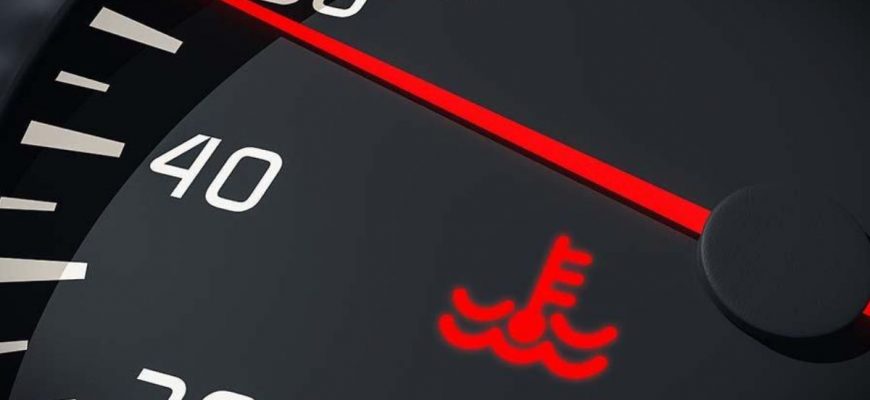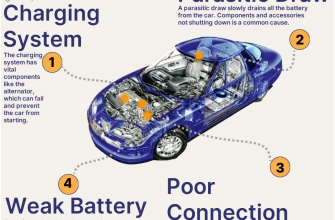Seeing the temperature light on your dashboard flicker to life can trigger a wave of anxiety for any driver. It’s a warning that your engine is overheating, and ignoring it can lead to costly repairs or even a breakdown. So, what should you do when that little light comes on? Here’s a detailed guide to help you navigate this potentially stressful situation safely and effectively.
- 1. Stay Calm and Assess the Situation
- 2. Pull Over Safely
- 3. Turn Off the Engine
- 4. Wait for the Engine to Cool
- 5. Check the Coolant Level
- 6. Look for Leaks or Damage
- 7. Restart and Monitor
- 8. Seek Professional Help
- 9. Prevent Future Overheating
- 10. Understand Common Causes of Overheating
- 11. Know When to Call for Assistance
- 12. Keep Emergency Supplies Handy
- 13. Stay Informed About Your Vehicle
- 14. Emphasize Routine Maintenance
- 15. Recognize the Signs of Overheating
1. Stay Calm and Assess the Situation
The first step is to remain calm. Panicking can cloud your judgment. If you notice the temperature light has illuminated, check your dashboard for any additional warning lights or indicators. If your oil light or battery light is also on, this may signal a more serious issue. Take a deep breath and prepare to pull over safely.
2. Pull Over Safely
As soon as it’s safe to do so, pull over to the side of the road. Turn on your hazard lights to alert other drivers. Find a flat, stable surface away from traffic if possible. Avoid stopping on bridges or in tunnels to reduce the risk of accidents.
3. Turn Off the Engine
Once you’ve safely parked, turn off the engine. This will prevent further damage to the vehicle and allow it to cool down. Continuing to drive with an overheating engine can lead to severe mechanical failures, including a blown head gasket or a seized engine.
4. Wait for the Engine to Cool
Allow your engine to cool down for at least 15 to 30 minutes. This is crucial because opening the hood of an overheated engine can lead to burns from steam or hot components. Use this time to gather your thoughts and check your surroundings.
5. Check the Coolant Level
After the engine has cooled, pop the hood and inspect the coolant reservoir. If the coolant level is low, it could be the cause of the overheating. However, do not attempt to open the radiator cap while the engine is hot, as this can release boiling coolant and steam. If the coolant level is low, you can add a mixture of water and coolant once the engine has cooled.
6. Look for Leaks or Damage
While you’re under the hood, check for any visible signs of leaks or damage. Look for puddles under the vehicle, especially around the radiator, hoses, and the engine block. If you notice any cracked hoses or leaks, these may need to be repaired before you can safely drive again.
7. Restart and Monitor
After checking the coolant and ensuring there are no leaks, restart the engine. Keep an eye on the temperature gauge and listen for any unusual sounds. If the temperature gauge remains in the normal range, you may be able to drive to the nearest service station. If the light comes back on or the gauge rises rapidly, pull over again and turn off the engine.
8. Seek Professional Help
If you’re unable to identify and resolve the issue yourself, it’s time to call for help. Contact a roadside assistance service or a tow truck to bring your vehicle to a mechanic. Explain the situation and any observations you made while troubleshooting.
9. Prevent Future Overheating
Once your vehicle is back in working order, consider regular maintenance to prevent future overheating incidents. This includes:
- Regularly checking coolant levels.
- Flushing the cooling system as recommended by your vehicle’s manufacturer.
- Inspecting hoses and belts for wear and tear.
- Changing the engine oil and filter at regular intervals.
Seeing your dashboard temperature light illuminate can be alarming, but knowing the right steps to take can ease your mind and protect your vehicle. Always prioritize safety and don’t hesitate to seek professional assistance when needed. By being proactive and maintaining your vehicle, you can reduce the risk of overheating and enjoy a more reliable driving experience.
10. Understand Common Causes of Overheating
To better prepare yourself for future occurrences, it’s helpful to understand what commonly causes engine overheating. Some of the most frequent culprits include:
- Low Coolant Levels: Insufficient coolant can prevent heat from being effectively dissipated.
- Faulty Thermostat: If the thermostat fails, it may not open to allow coolant to circulate through the engine.
- Blocked Radiator: Debris or corrosion can block the radiator, hindering its ability to cool the engine.
- Broken Water Pump: A malfunctioning water pump can stop coolant from flowing through the engine.
- Leaking Hoses: Any leaks in the cooling system can lead to a drop in coolant levels.
- Damaged Head Gasket: A blown head gasket can cause coolant to leak into the engine, leading to overheating.
11. Know When to Call for Assistance
If you find yourself frequently dealing with an overheating engine or if the dashboard temperature light continues to activate even after you’ve taken corrective measures, it’s time to consult a professional mechanic. Consistent overheating is a sign of an underlying problem that requires expert diagnosis and repair.
12. Keep Emergency Supplies Handy
Being prepared can make a world of difference. Keeping an emergency kit in your vehicle can help you deal with overheating situations more effectively. Consider including:
- A jug of coolant and water
- Basic tools for minor repairs
- A flashlight
- Reflective warning triangles
- Gloves and a first-aid kit
13. Stay Informed About Your Vehicle
Familiarize yourself with your vehicle’s manual, as it will provide specific information about your car’s cooling system, including how to check coolant levels and the recommended type of coolant. Knowing your vehicle inside and out will enable you to take prompt action when issues arise;
14. Emphasize Routine Maintenance
Regular maintenance checks can significantly reduce the likelihood of overheating. Schedule periodic visits to your mechanic to ensure that your vehicle’s cooling system is functioning correctly. This includes checking coolant levels, inspecting hoses and belts, and flushing the radiator as needed.
15. Recognize the Signs of Overheating
Besides the dashboard light, there are other signs that your engine may be overheating; Be aware of the following:
- Steam coming from under the hood
- A strong smell of coolant
- Unusual noises from the engine bay
- A rise in the temperature gauge
By recognizing these symptoms early, you can take preventive measures before a minor issue escalates into a major repair.
While seeing your dashboard temperature light illuminate can be disconcerting, knowing how to respond can mitigate the panic and help you manage the situation effectively. By following these steps and staying proactive about vehicle maintenance, you can ensure a safer driving experience and prolong the life of your engine. Remember: when it comes to your car, a little knowledge and preparedness go a long way!










Fantastic article! The tips about safely pulling over and waiting for the engine to cool are invaluable. I feel much more confident now about handling overheating issues.
This article is incredibly helpful! I always panic when the temperature light comes on, but now I feel more prepared to handle it calmly. Thank you for the clear steps!
Thank you for breaking down such a stressful situation into manageable steps! I appreciate the reminder about checking coolant levels after cooling down—very practical advice.
I love how detailed this guide is. The emphasis on staying calm and assessing the situation really resonated with me. It’s easy to panic, but this makes it much clearer what to do.
Great advice! I didn’t know the importance of turning off the engine immediately. This will definitely save me from potential damage in the future!
This guide is a lifesaver! I had no idea how dangerous it could be to open the hood right away. Your tips will definitely help me avoid costly repairs in the future!